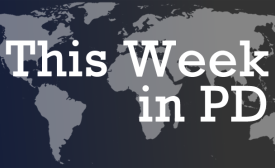japan
From April 22 to April 29, U.S. President Barack Obama visited Japan, South Korea, Malaysia, and the Philippines in what many observers called an attempt to solidify his administration’s “rebalance to Asia.” The Diplomat spoke with Dr. Jonathan Pollack, a senior fellow at the Brookings Institution, about Obama’s goals for the trip, and the major events at each of his stops.
In November 2011, Barack Obama told the Australian parliament that the United States was embarking on a major shift in its foreign policy—with a pivot to Asia. “After a decade in which we fought two wars that cost us dearly, in blood and treasure,” he said, “the United States is turning our attention to the vast potential of the Asia Pacific region.”

Tourism and nation branding have the potential to boost a country's soft power and convey values and culture. However, it's not always a win-win situation for governments (or tourists).
Global pop star Justin Bieber has sparked controversy in Asia after he uploaded photos of his visit to Japan’s controversial war shrine. During a visit to Tokyo with his mother on Wednesday, Justin Bieber posted photos of himself at Japan’s controversial Yasukuni Shrine on his Instagram account, sparking outrage in some Asian countries.
While people often discuss historical problems in the bilateral relationship between China and Japan, they normally only see history as a background issue for the current tension and thus refrain from taking any actions. Most people also believe that it would take a long time to see any result from changes to the historical narrative and history education.
From territorial disputes in two of Asia's major seas to the nuclear crisis in North Korea, Chinese and US officials have exchanged sharp words - a trend that analysts say has heightened China's frustration over what it perceives as intensifying efforts to contain its rise.
Public Diplomacy: A Global Phenomenon
In 2013, at least 136 countries were active in public diplomacy, both as principals and/or receivers, and PD activity took place in every region of the world. As represented in Figure 1, the United States, China, India, Russia, Israel, and the United Kingdom were the most mentioned actors in PD stories throughout the year.
The conventional wisdom on U.S. alliances in Asia, at least in the West, Japan, and Taiwan (but not necessarily in South Korea), is that they are broadly a good thing. One hears this pretty regularly from U.S. officials and the vast network of U.S. think tanks and foundations, such as the Center for Strategic and International Studies and the American Enterprise Institute, and their many doubles in Asia.







